Even before I climbed the stairs to the Seattle garden of Bonnie Berk and Larry Kessler during our mid-July ‘GardenFling’ tour of gardens in Washington State, I stood admiring the lush streetscape. An exquisitely planted boulevard (you really can’t denigrate this by calling it a ‘hellstrip’) and burgundy-leaved trees and shrubs were arrayed in front of a monolithic stucco wall. That brick-topped wall and double staircase were part of the vision of Seattle’s well-known architect Arthur Lamont-Loveless (1873-1971) who, at the time he designed the house in 1916, was also president of the Washington Chapter of the American Institute of Architects.
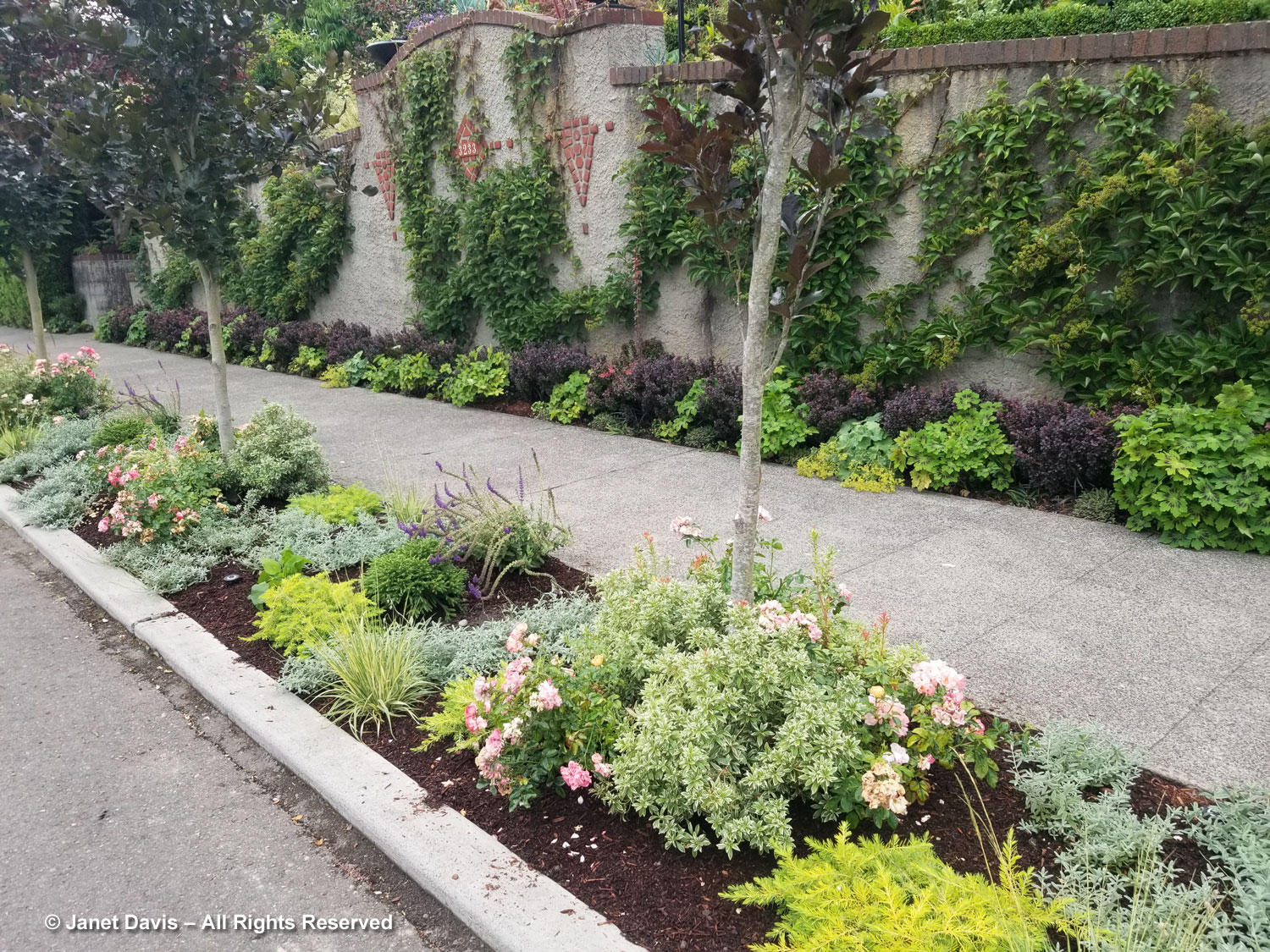
But Bonnie Berk, below, had her own vision for the house and garden, especially the slope leading to the street. When she purchased the property in 1995, she was busy with a successful consulting business she’d launched in 1988 working on public-private partnerships and “the spectrum of major public policy issues, developing long range strategies and facilitating agreements among diverse communities.” (BERK Consulting) After retiring from the company in 2013 and marrying Larry Kessler, the Chairman of Health Services at the University of Washington School of Public Health the following year, she had time to devote herself to the garden. Today, she’s heavily involved in local gardening initiatives, including the board of the Northwest Horticultural Society, the Hardy Fern Foundation and Far Reaches Botanical Conservancy.
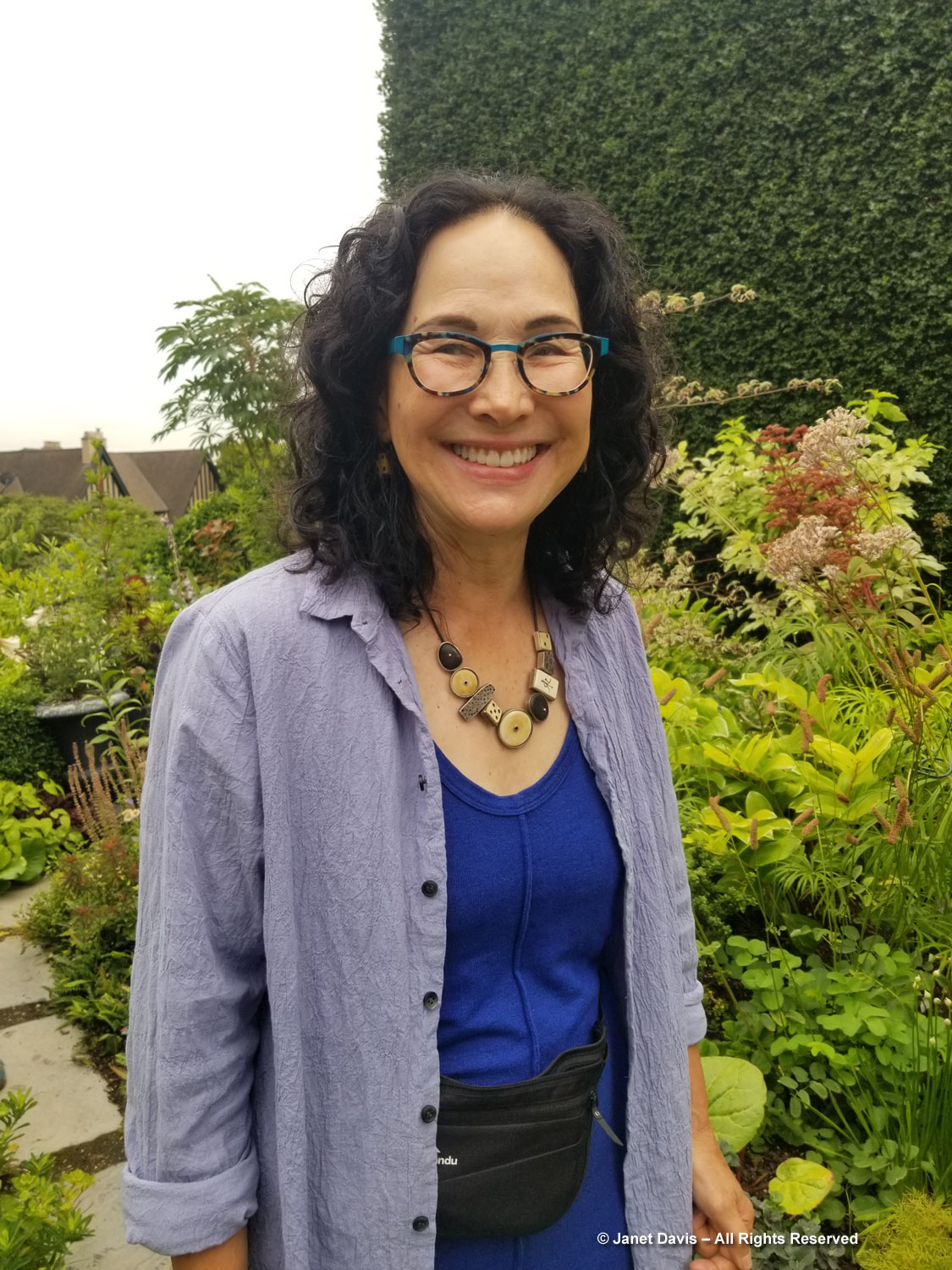
Anyone who has gardened on a steep slope knows the challenges of designing, planting and maintaining such a space. In 2000, when Berk began the job of repairing the stairs, cracked walls and central terrace, she also tackled the slope to the wall, creating terraces for planting. Today, the slope is a colourful tapestry of perennials, bulbs and shrubs. Containers sit on the brick-topped retaining wall and at the top of the north slope is a weathered metal sculpture titled ‘Joy’ by Jennifer Gilbert Asher & Mario Lopez; it echoes the warm colour of the bricks and the bronze foliage of the dwarf Japanese maples.
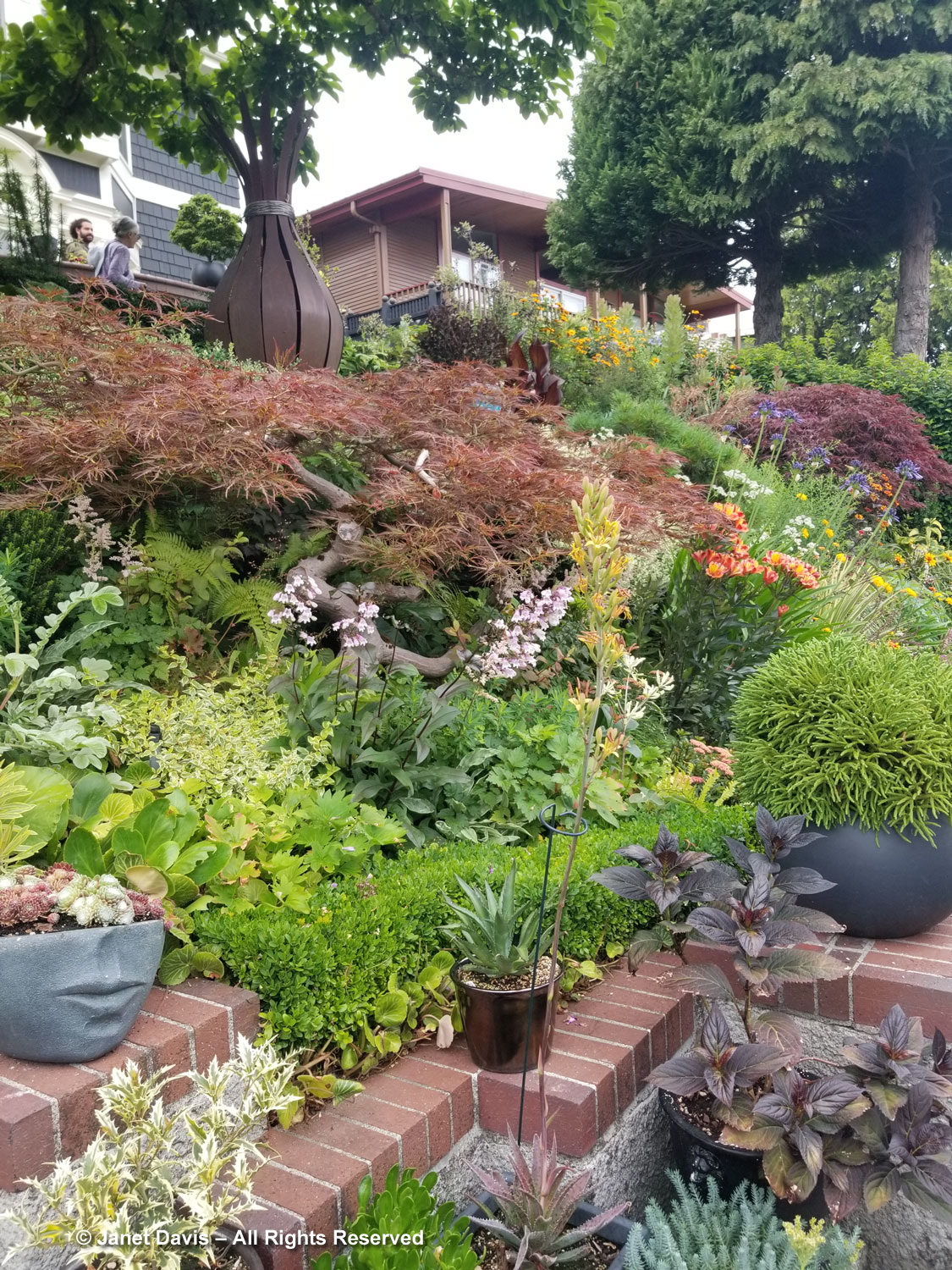
It’s clear even before climbing to the house level that Bonnie Berk is in love with plants of all kinds and designs with an artist’s sensitivity to form, texture and colour.
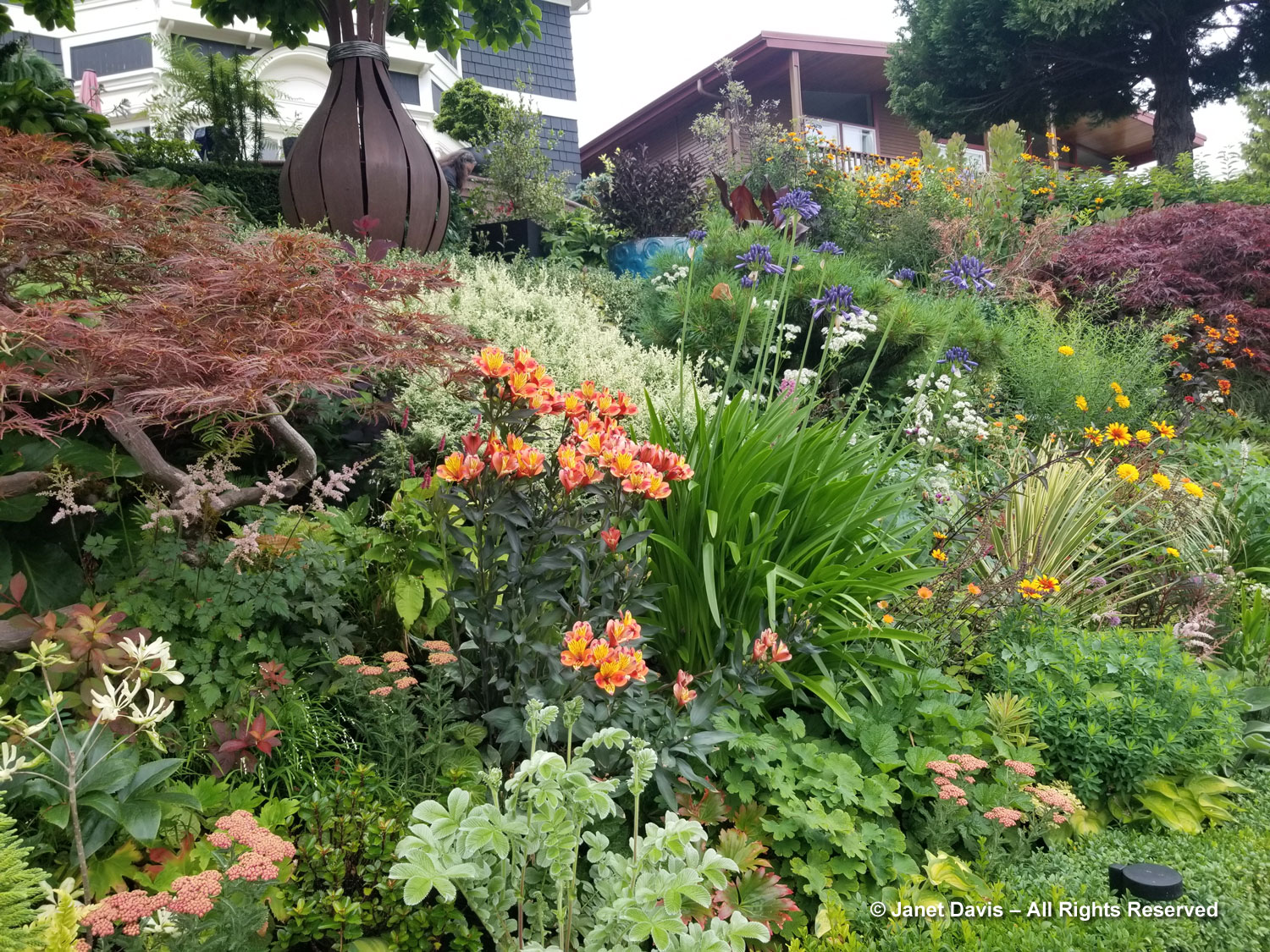
”Indian Summer’ alstroemeria — which I also photographed at Dan Hinkley’s Windcliff’ — has a starring role here.
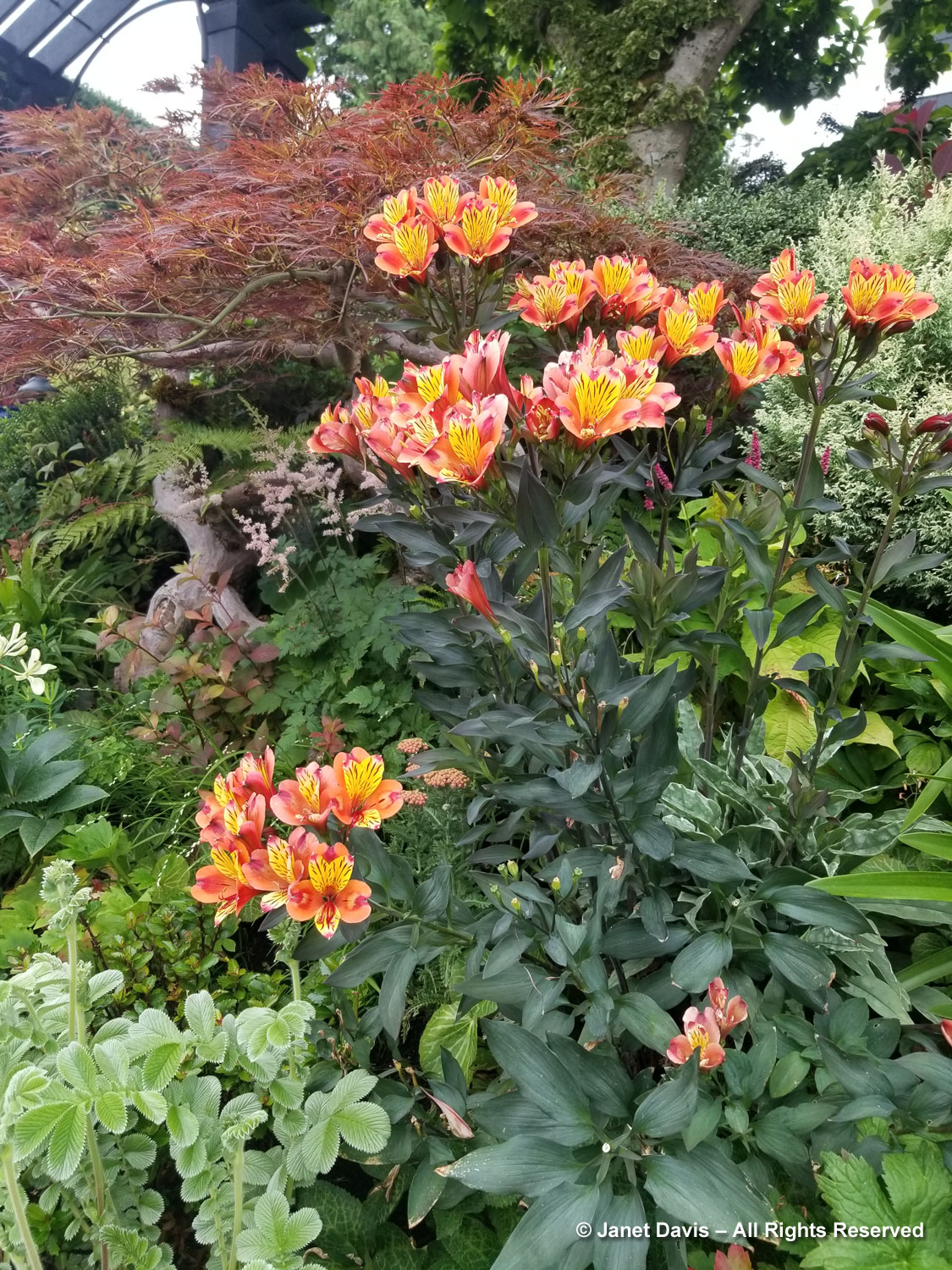
Dark-leaved dahlias, a fountain of variegated moor grass (Molinia caerulea ‘Variegata’), pink sanguisorba bottlebrush flowers and blue agapanthus adorn the slope’s south side. Near the top is a metal sculpture by Jim Honold titled ‘Moongate’ and beyond, a brilliant chartreuse bouquet of ‘Golden Spirit’ smokebush (Cotinus coggygria).
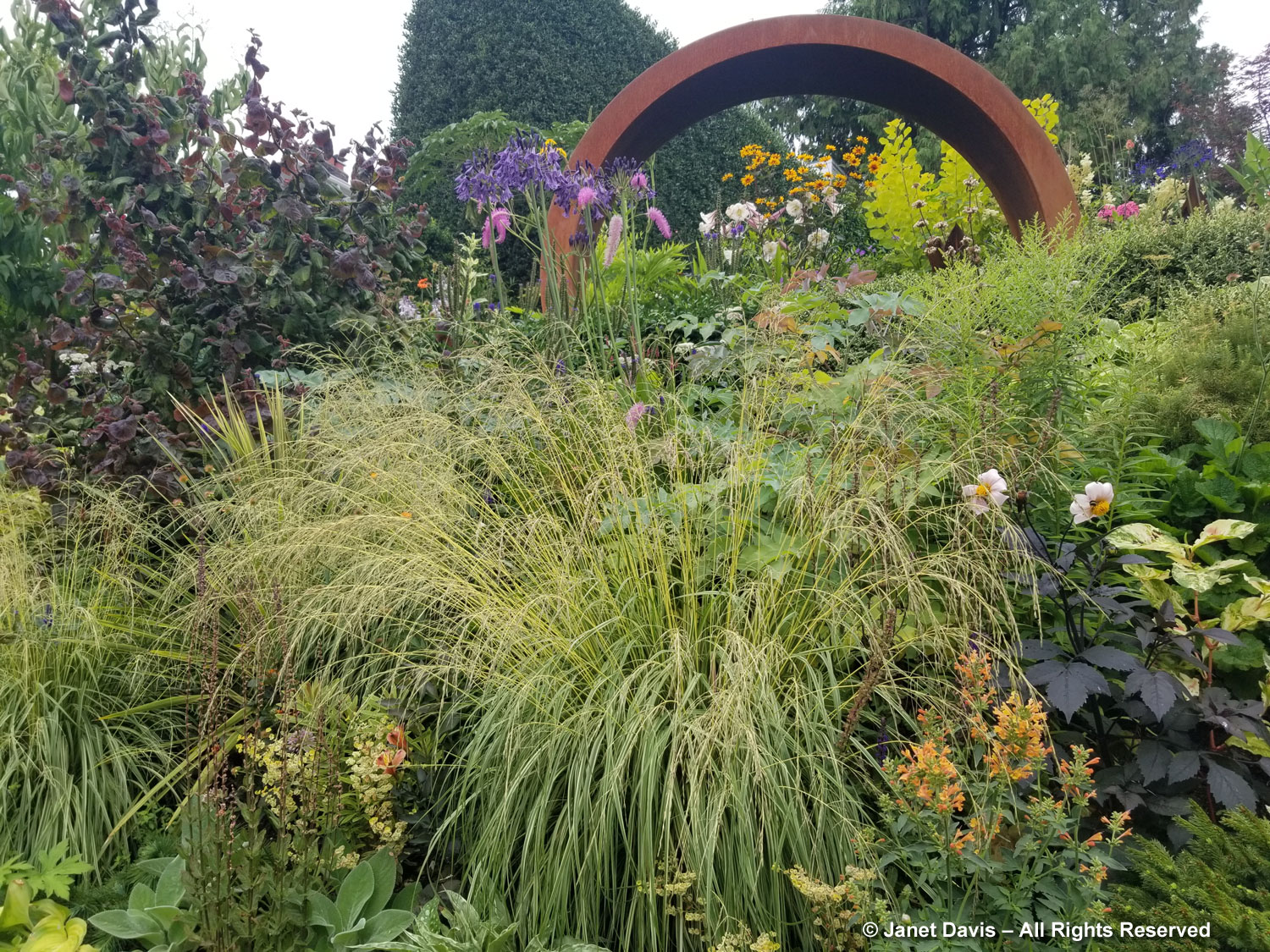
Boxwood hedging defines a planting terrace while the sculpture frames daisies and lilies at the top of the slope. Beyond is a 20-foot high high cherry laurel hedge (Prunus laurocerasus) believed to have been planted when the house was built. It affords privacy from the neighbours while creating a dramatic backdrop to the plantings on the house level. (When I was a little girl in Victoria, B.C., the shiny, oblong leaves of cherry laurel were the “dollar bills” we stacked at the cash register in our make-believe store.)
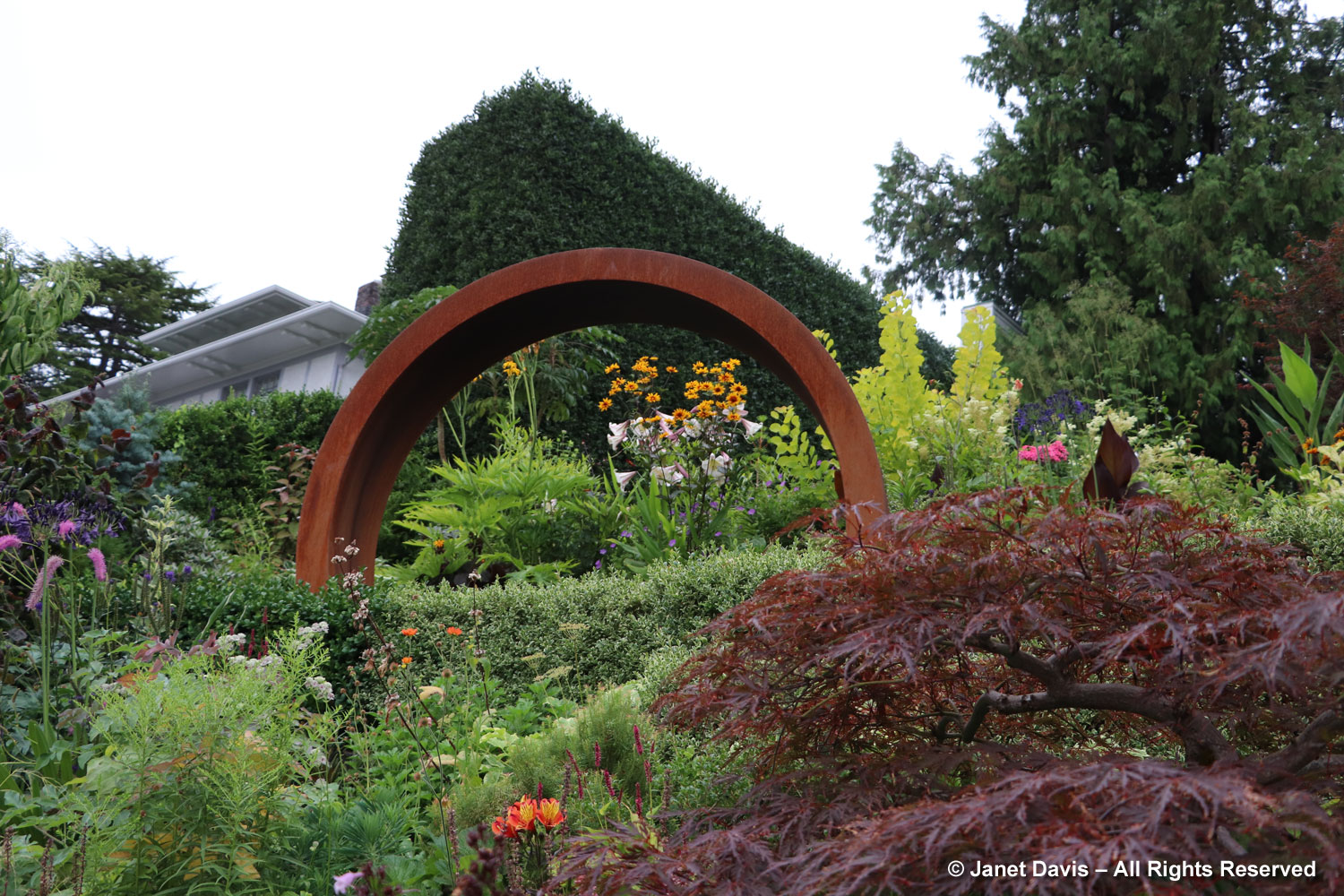
A peach-coloured hyssop (Agastache) is in full bloom — always a favourite with hummingbirds — and behind is a stand of summer alliums, likely ‘Millenium’.
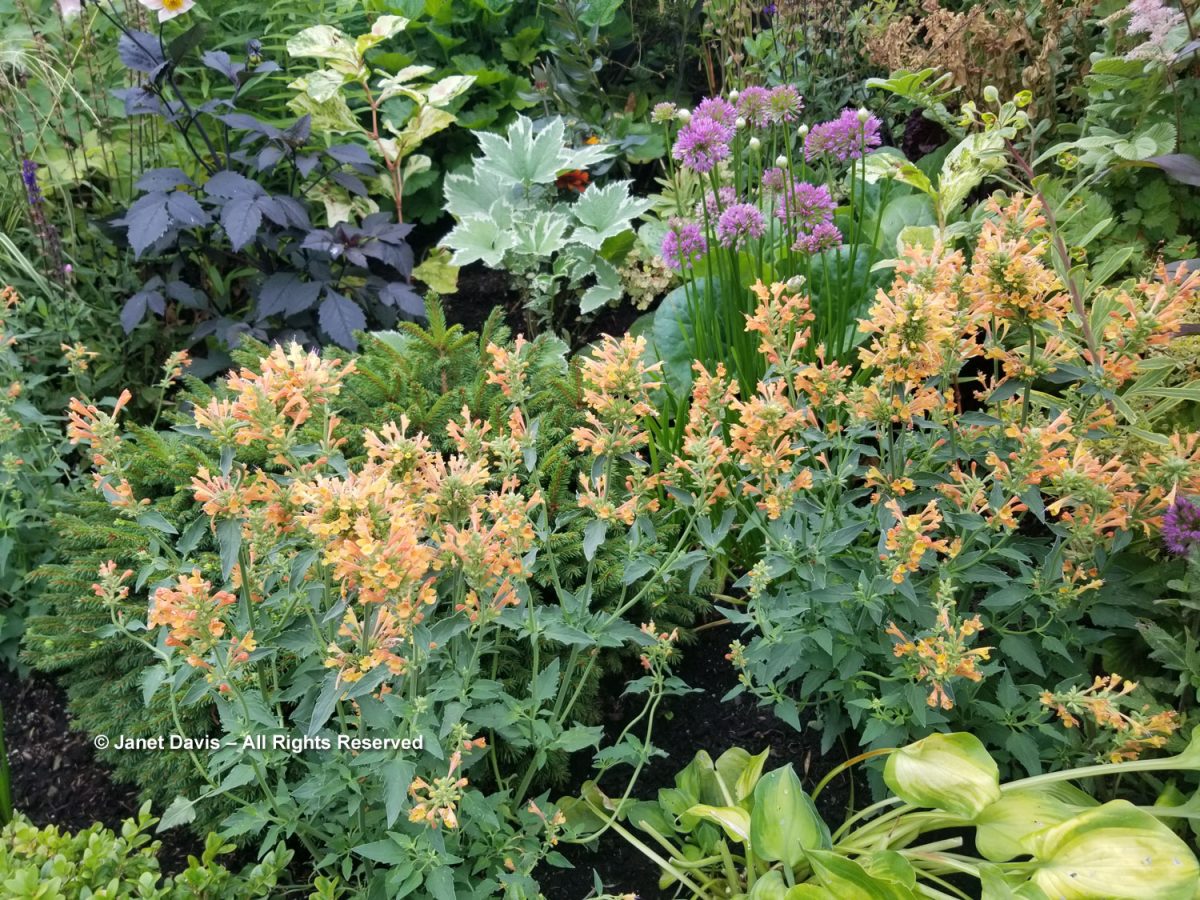
On the main staircase terrace is an antique Singer sewing machine pedestal topped by a metal table filled with succulents. And all around are colourful containers filled with treasures.
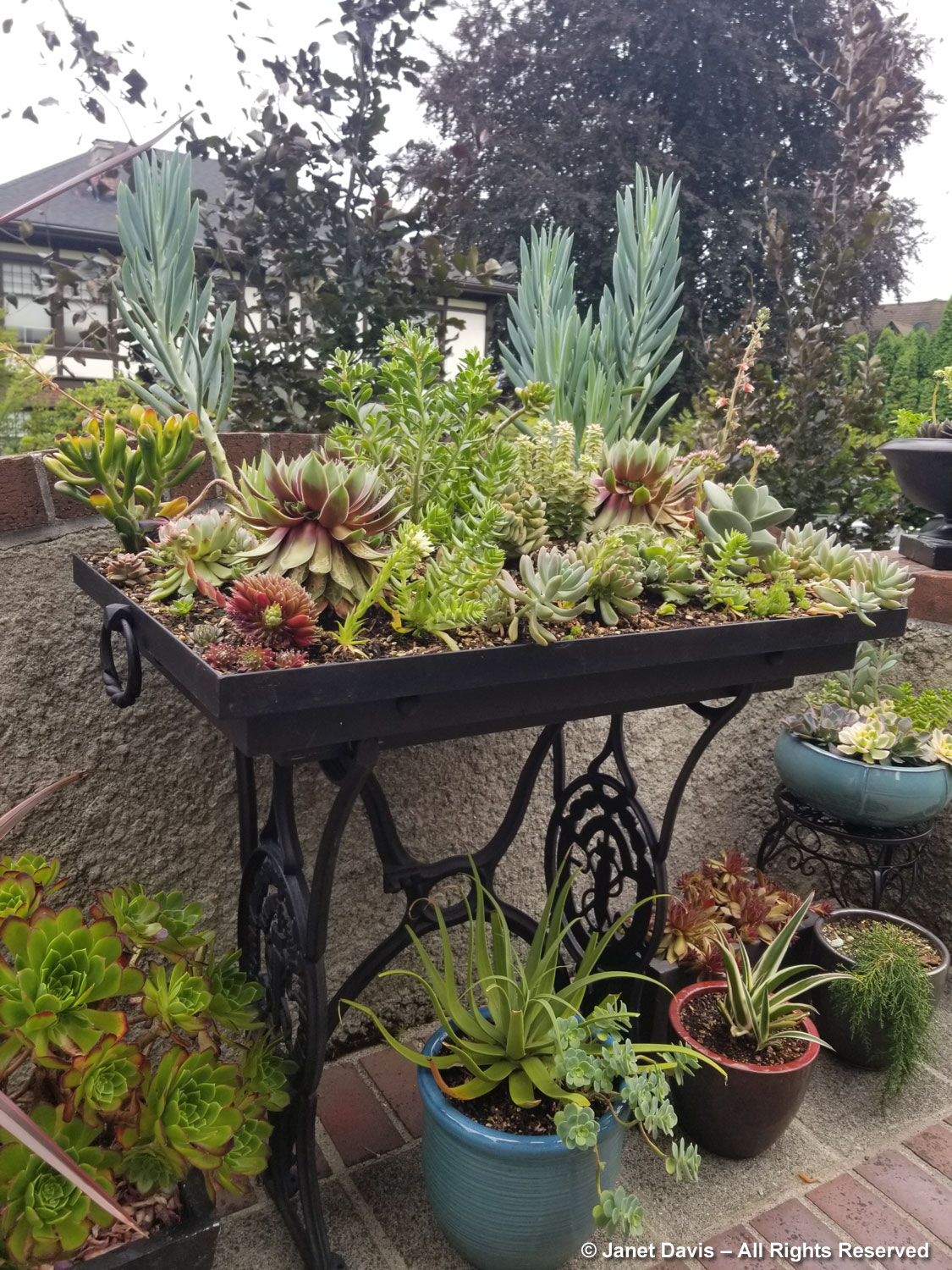
A closer look at the succulents in their gravelly soil.
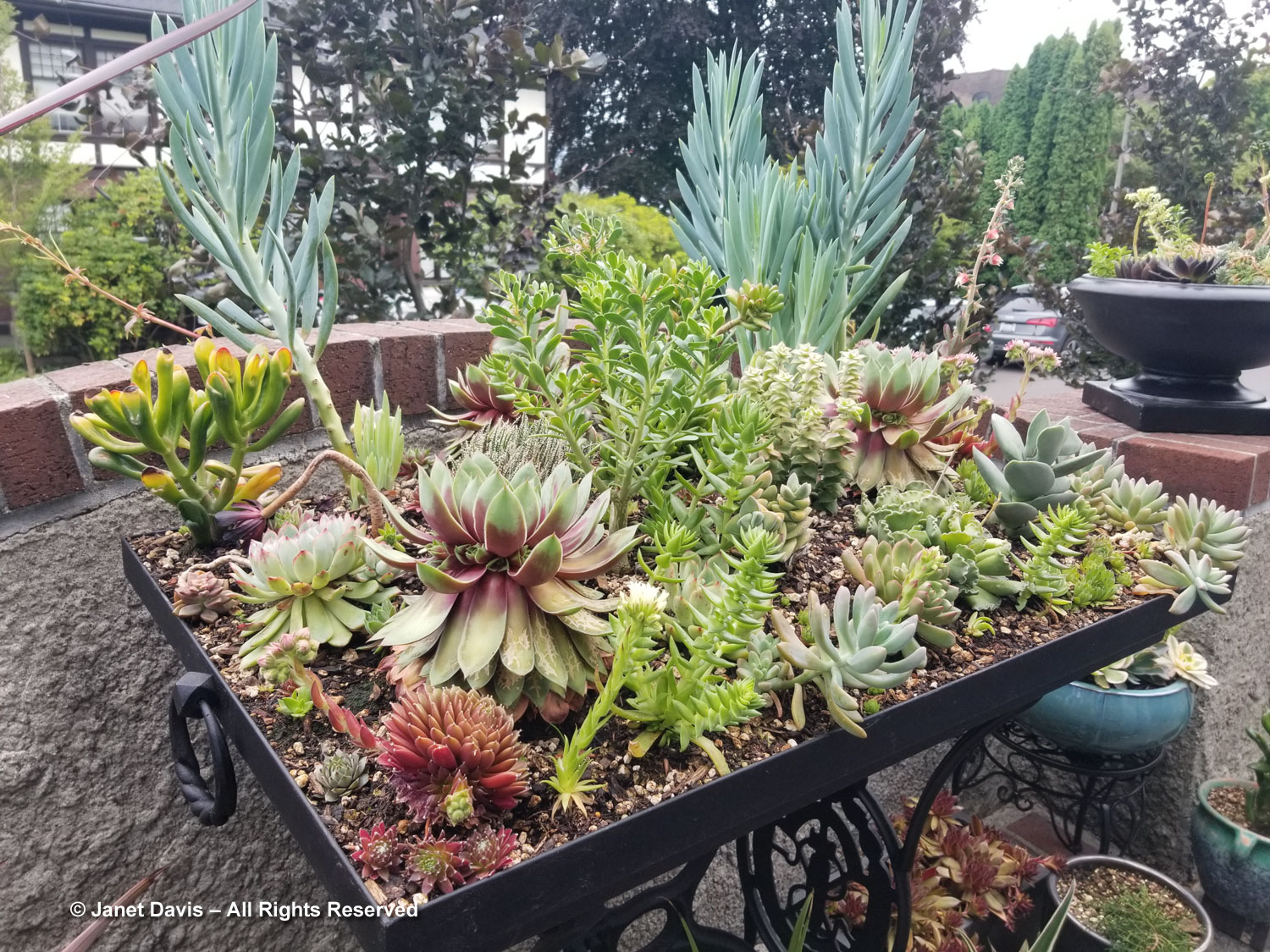
Turning left at the top of the stairs, we come to a long mixed border fronting the laurel hedge and centered with a patio featuring a black Luytens bench under a Jim Honold-designed metal arch wreathed in variegated Kadsura japonica ‘Chirimen’. Kadsura is an evergreen, Japanese, woodland vine related to Schisandra and features glossy leaves on stems that can reach 15 feet. It bears tiny, yellow, magnolia-like flowers and edible fruit. This patio with its many containers seemed like a beautiful stage set with the laurel hedge a leafy back curtain.
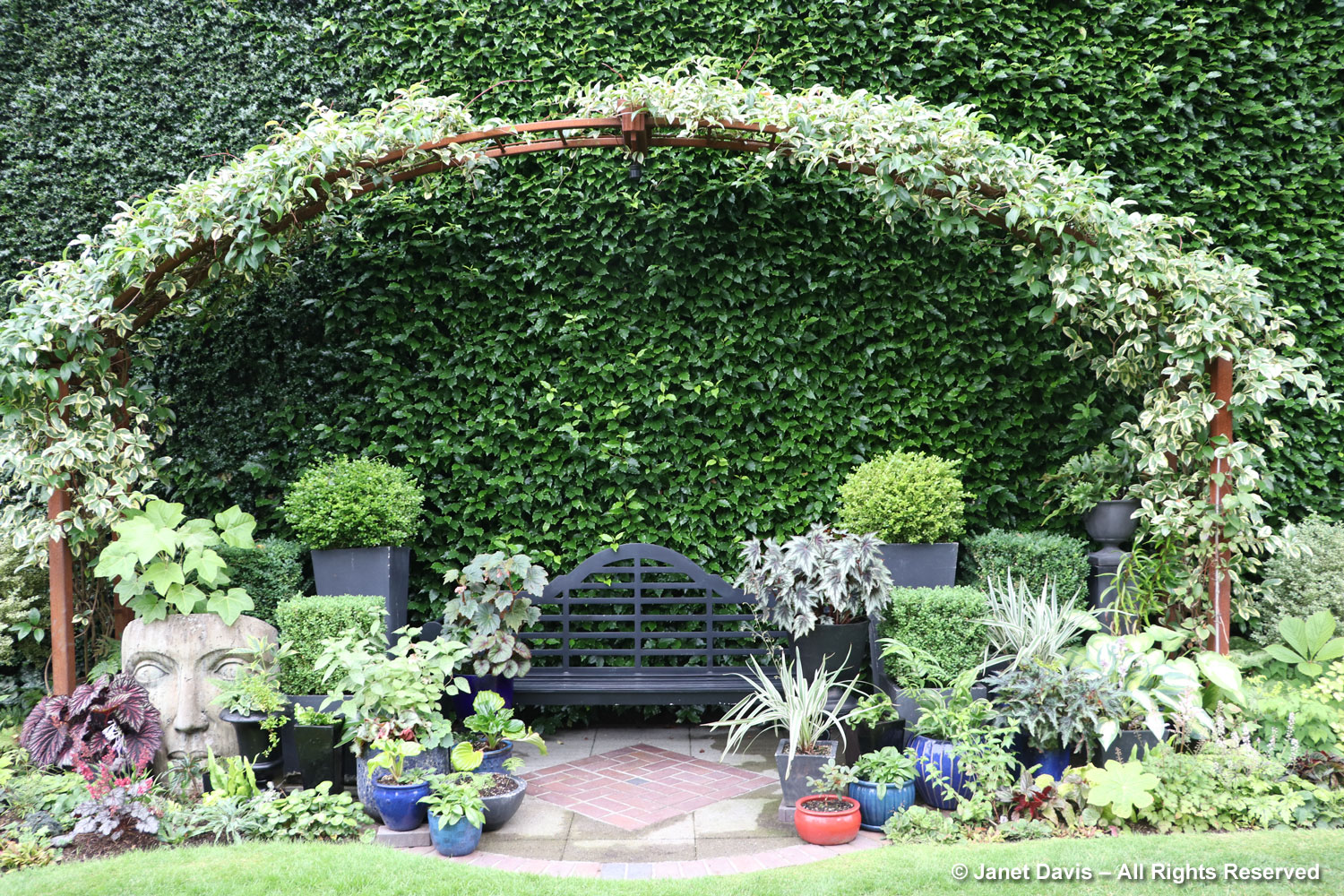
The brickwork in the paving and the arch carry the colour theme. The handsome Rex begonia at right typifies Berk’s love of good foliage.
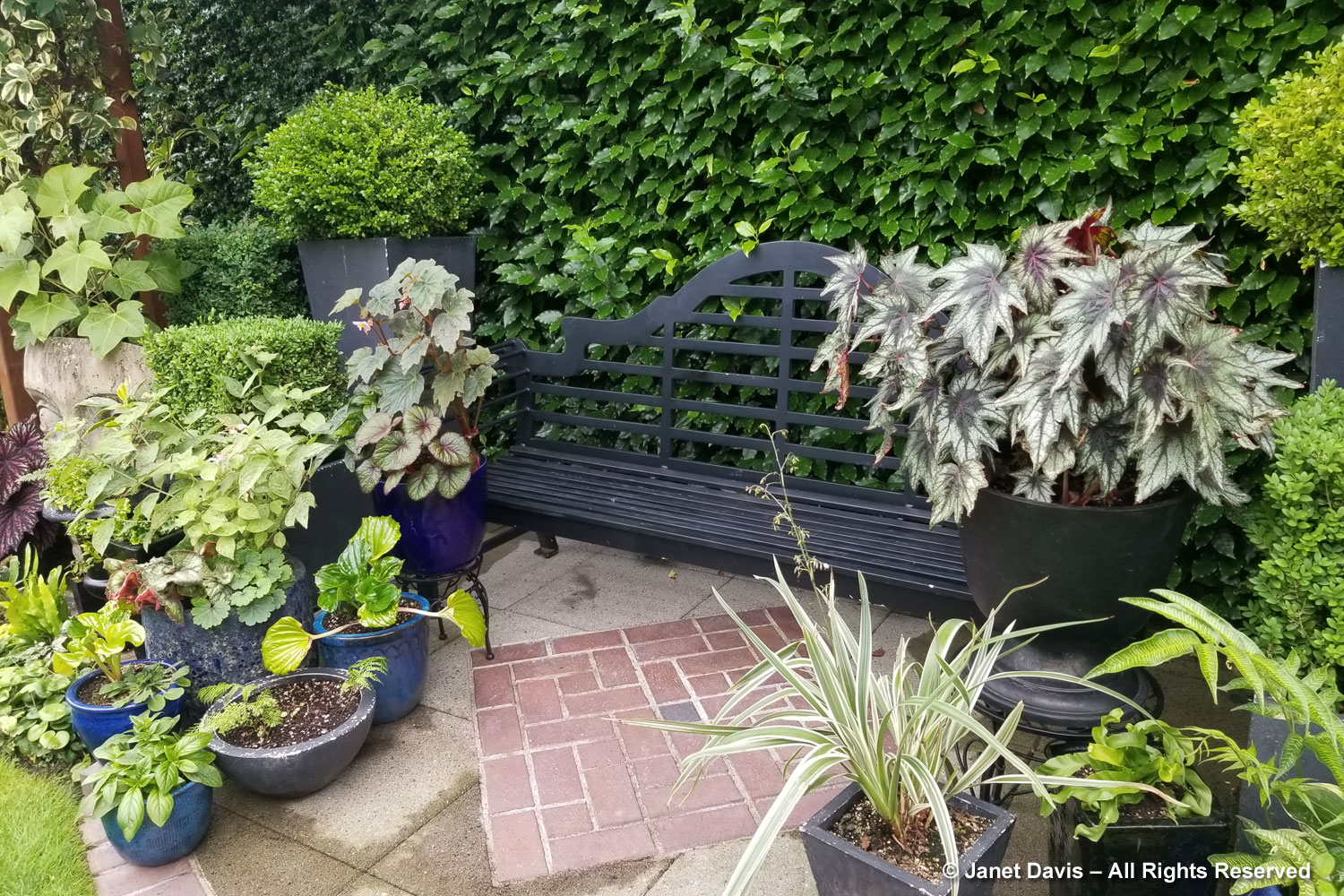
Foliage surrounds a sculpture titled ‘Mother Nature’.
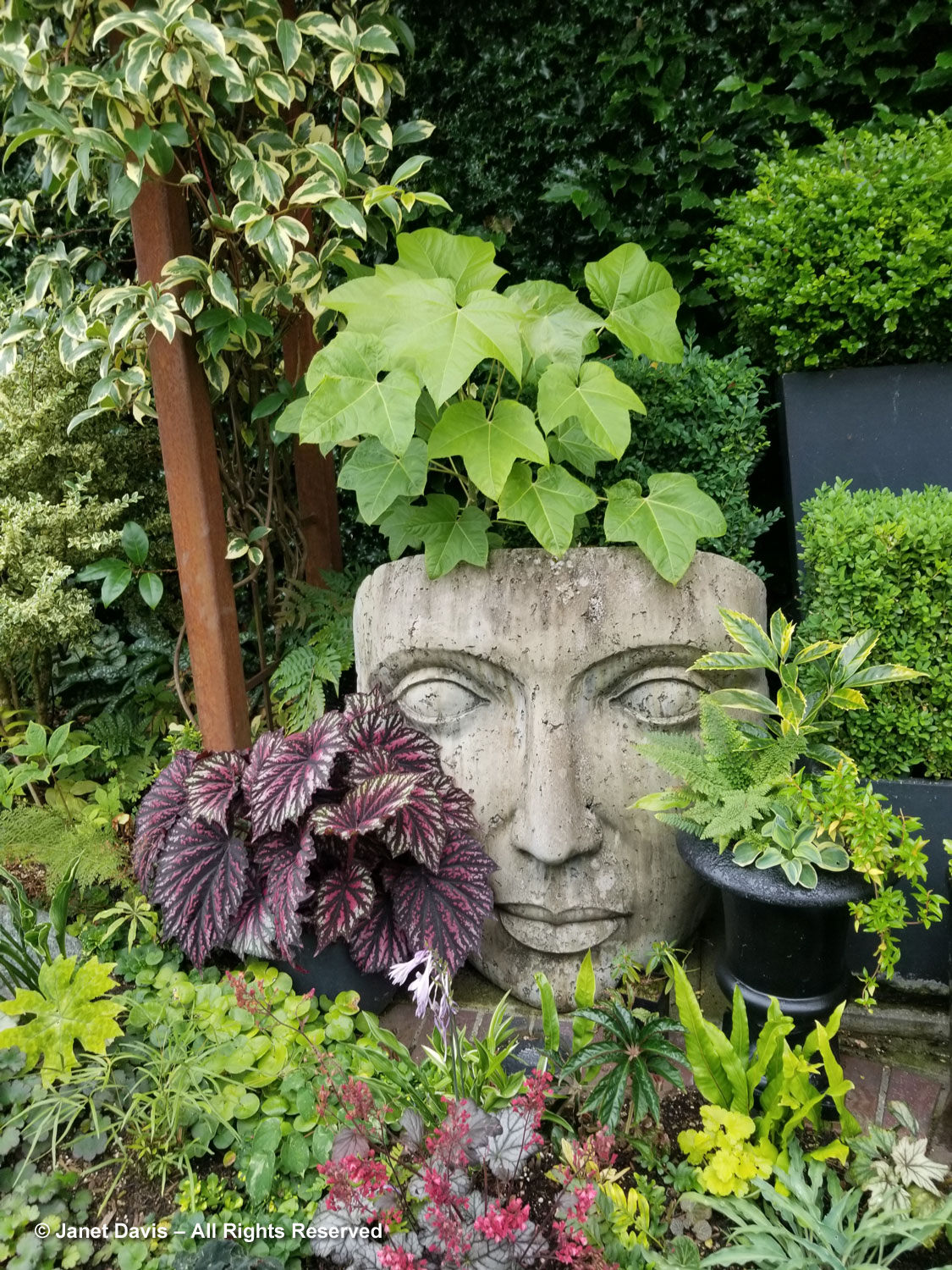
Further along the border, a sculpture nestles behind a hydrangea, with the russet seedheads of rodgersia echoing the rusty metal.
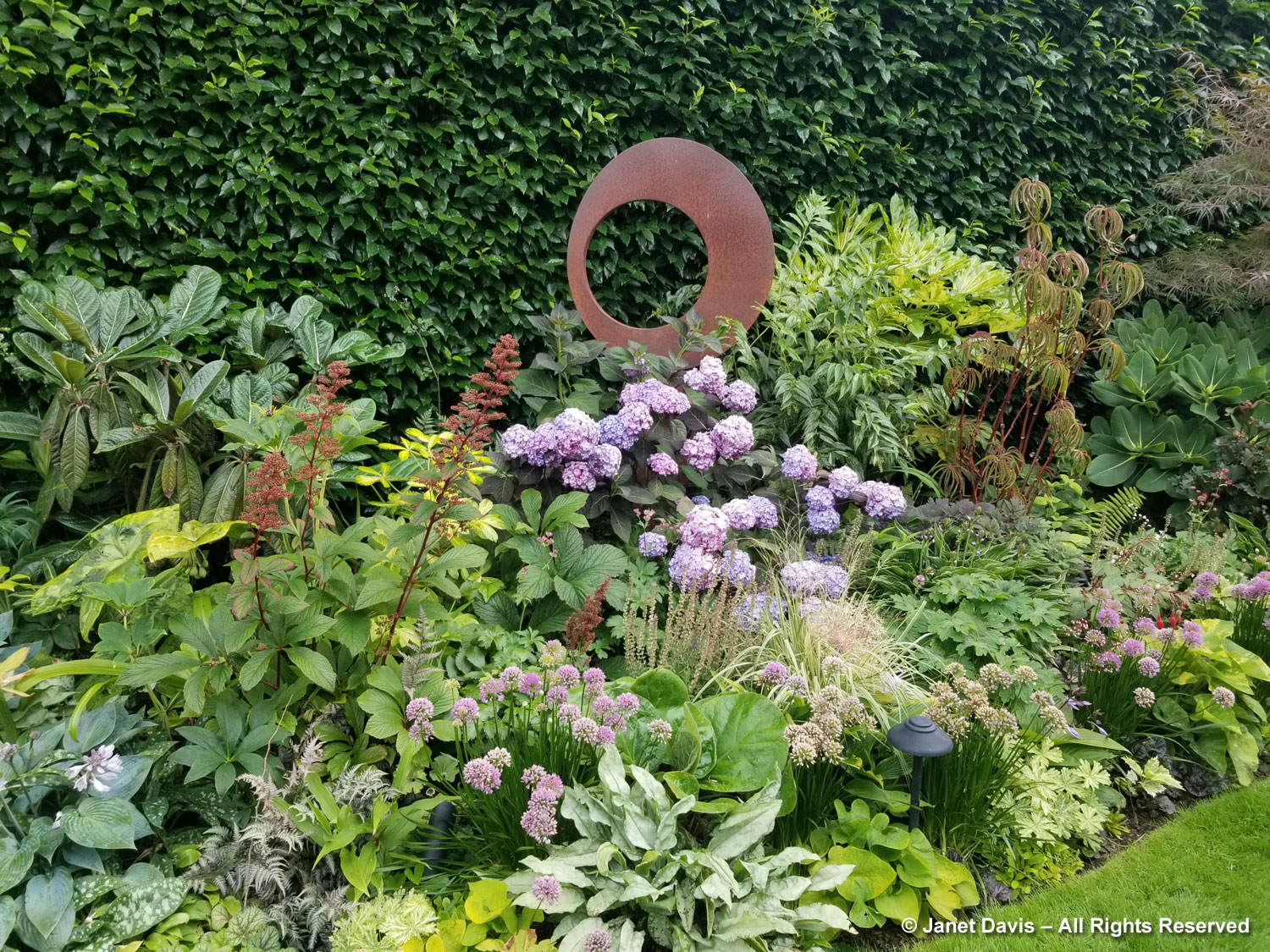
Here, a shower of tiny, lilac thalictrum flowers and starry clematis rise above the leaves of Deutzia scabra ‘Variegata’.
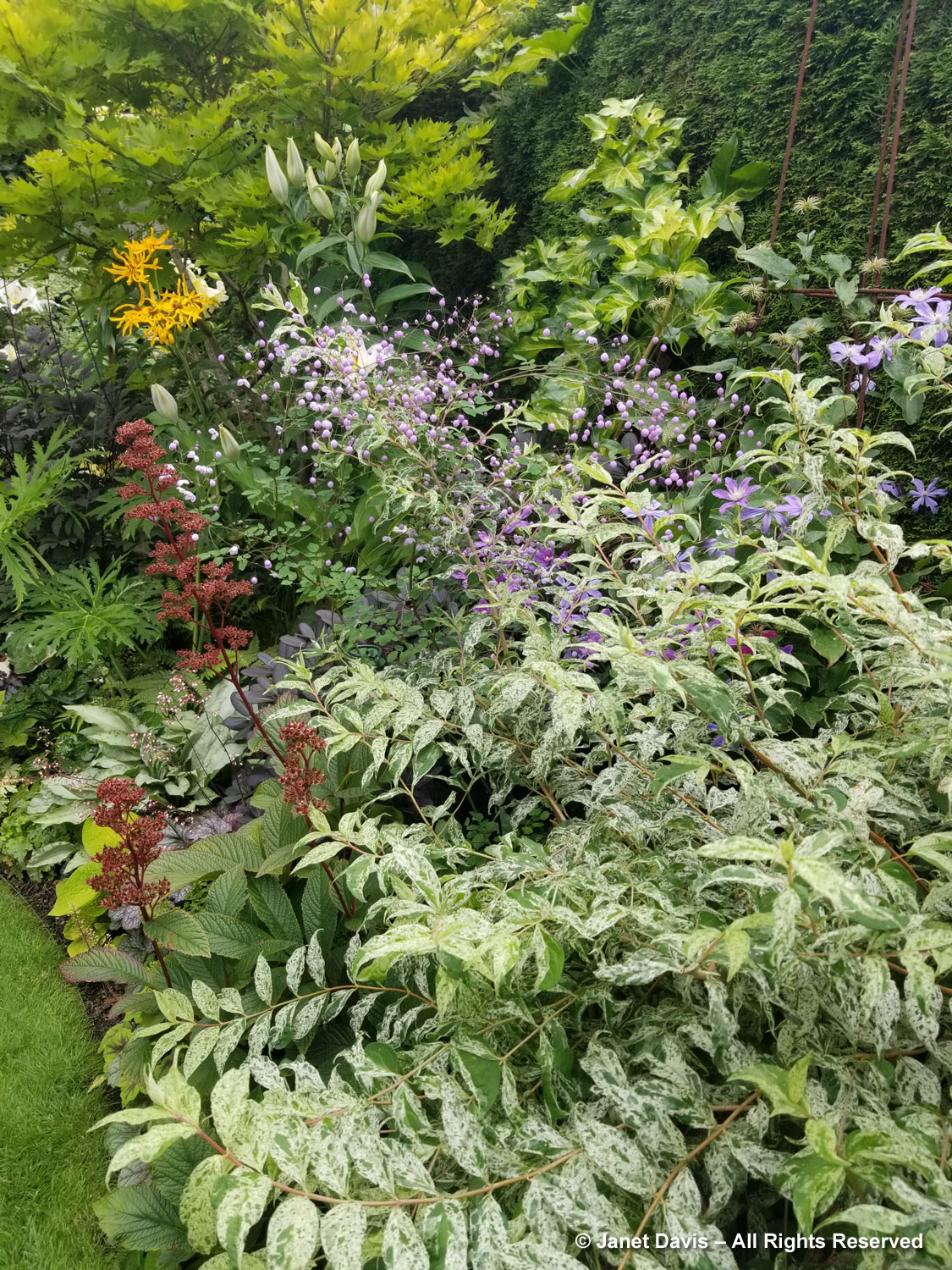
Some gardens can be seen in a glance, but Bonnie Berk’s plantings are like tiny paintings, each one different from the next. There’s no “three of this-and-five of that” ethos here. It’s all jewels.
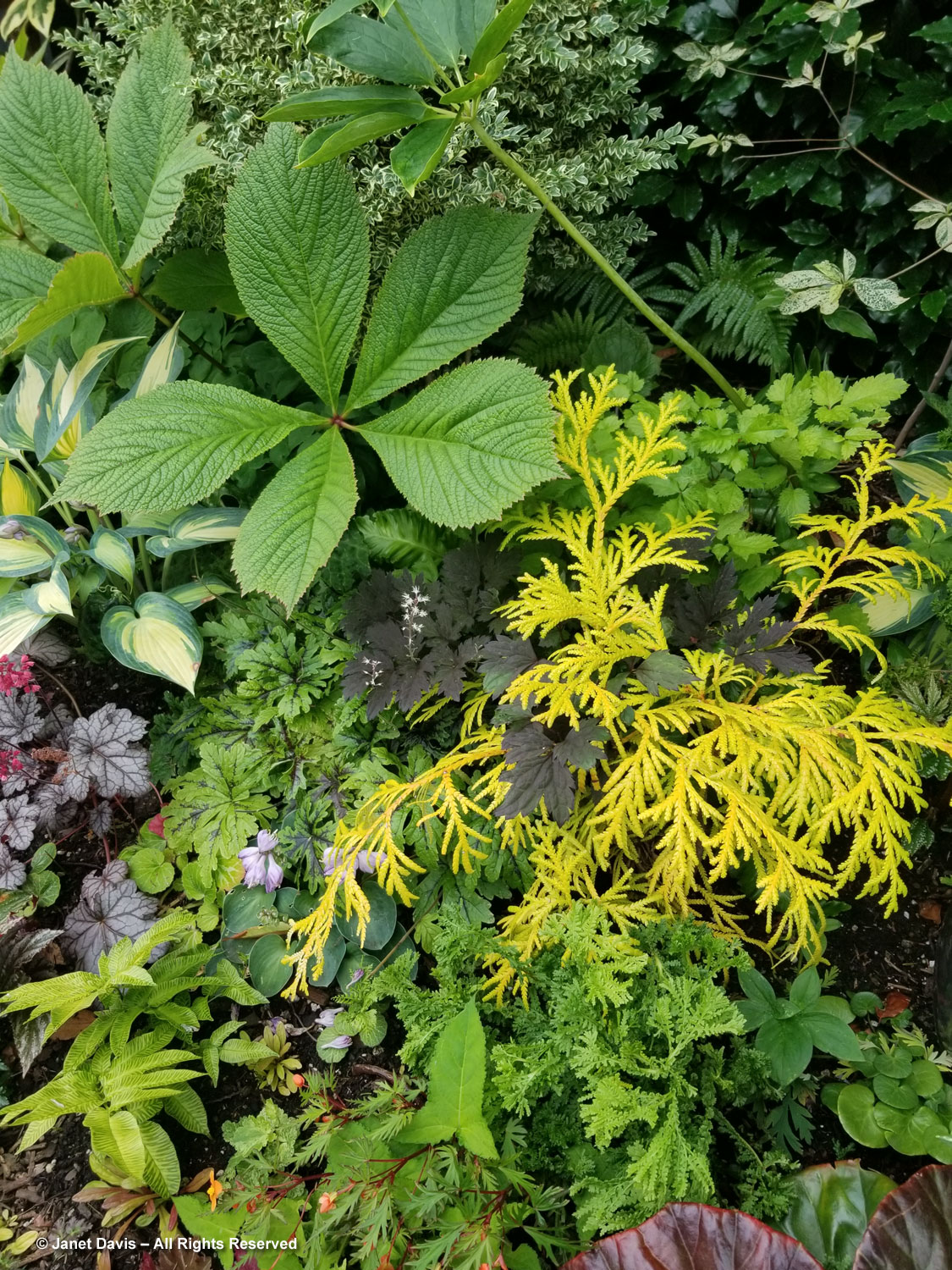
‘Antonow’s Blue’ honeybush (Melianthus major) is a semi-evergreen shrub that bears red-bracted flowers in late summer – but it’s primarily grown for its stunning, glaucous foliage.
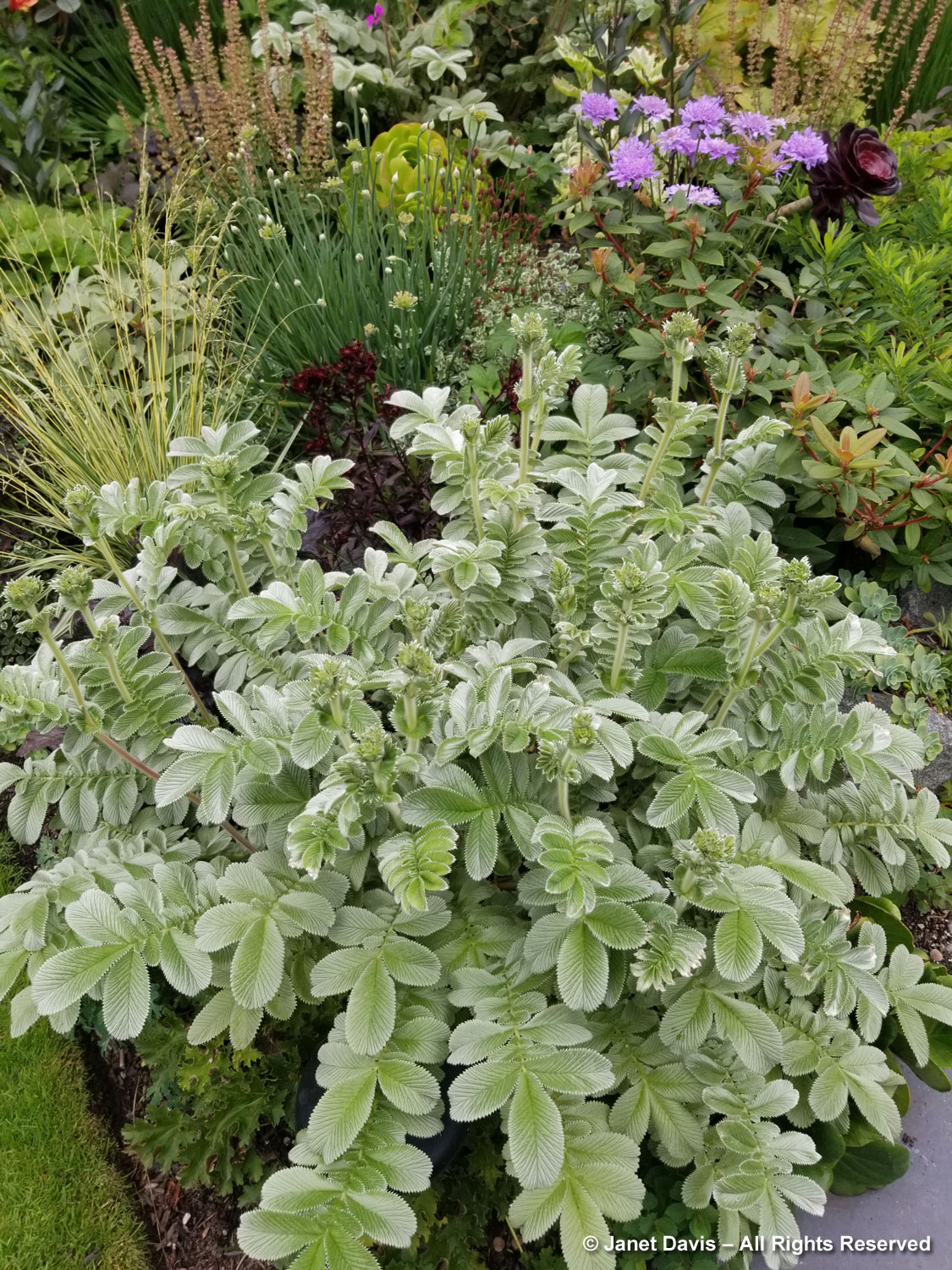
The house’s siding is finished in a dramatic black that acts as an effective background for many of Berk’s dark pots. But a red Adirondack chair on this side deck looks like a comfy spot for enjoying the view.
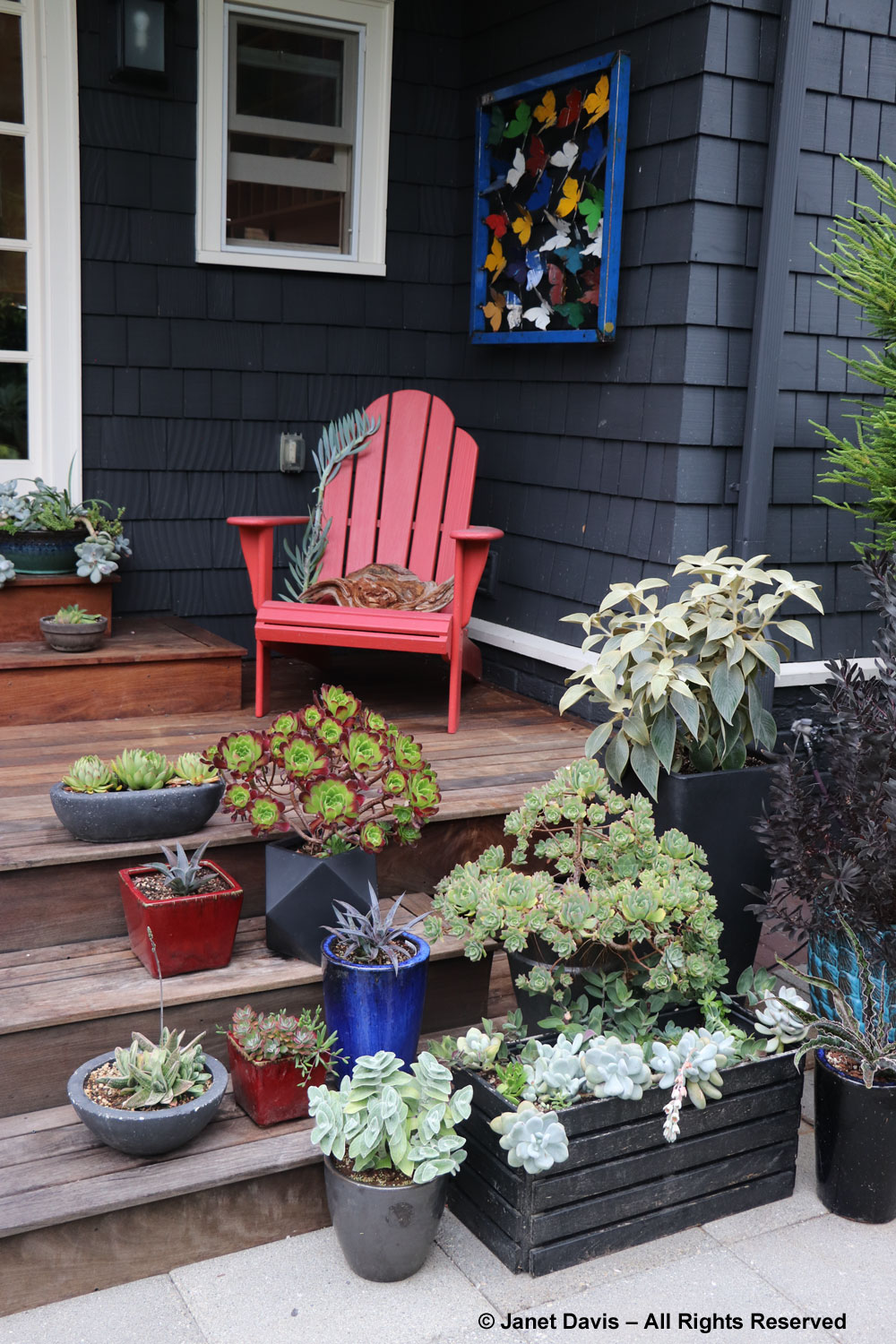
Sculptures and pots are arrayed on steps to another terrace off the house’s living room, which affords a view to the east of Lake Washington.
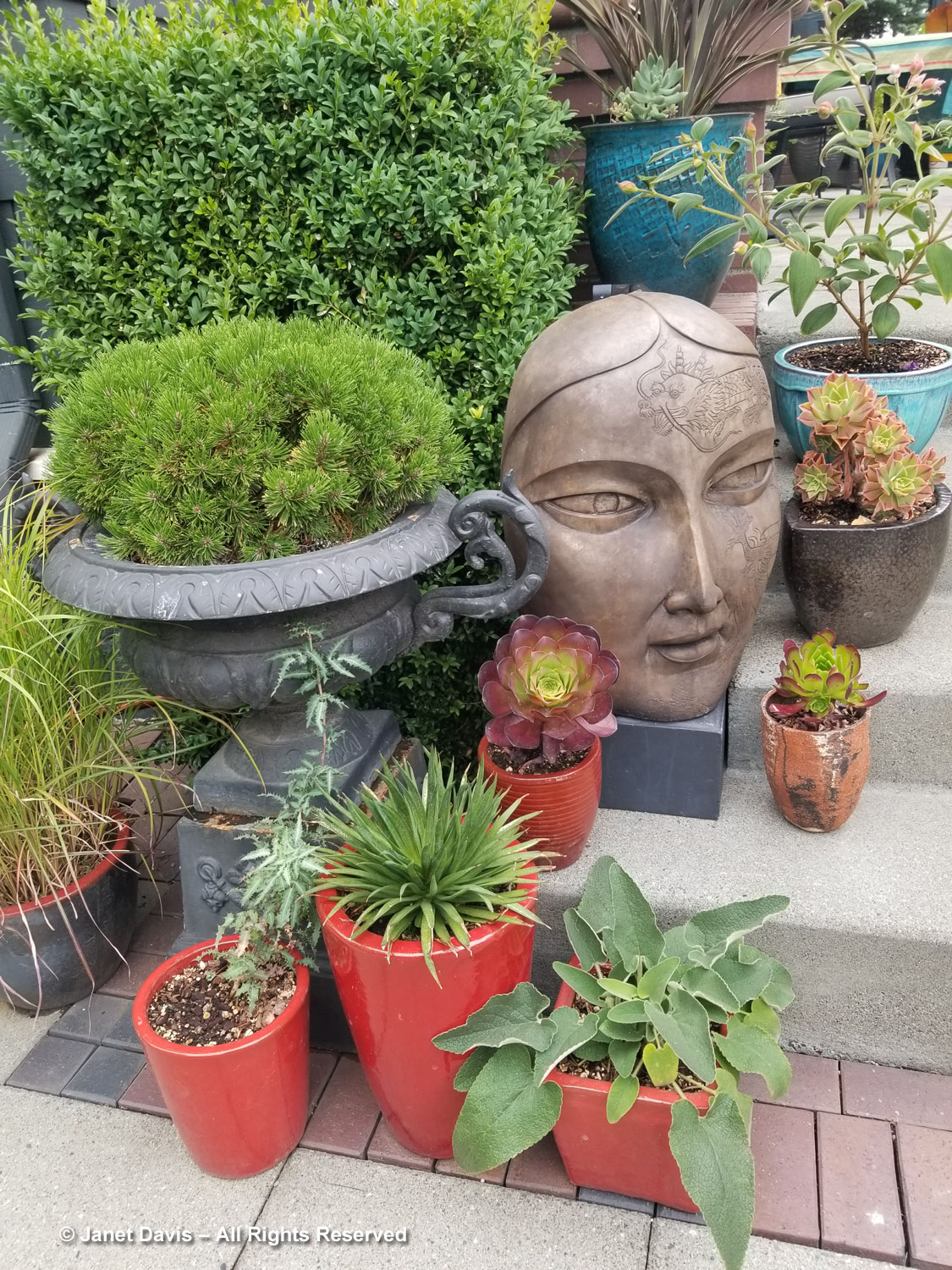
A white clematis flower emerges from a glazed pot
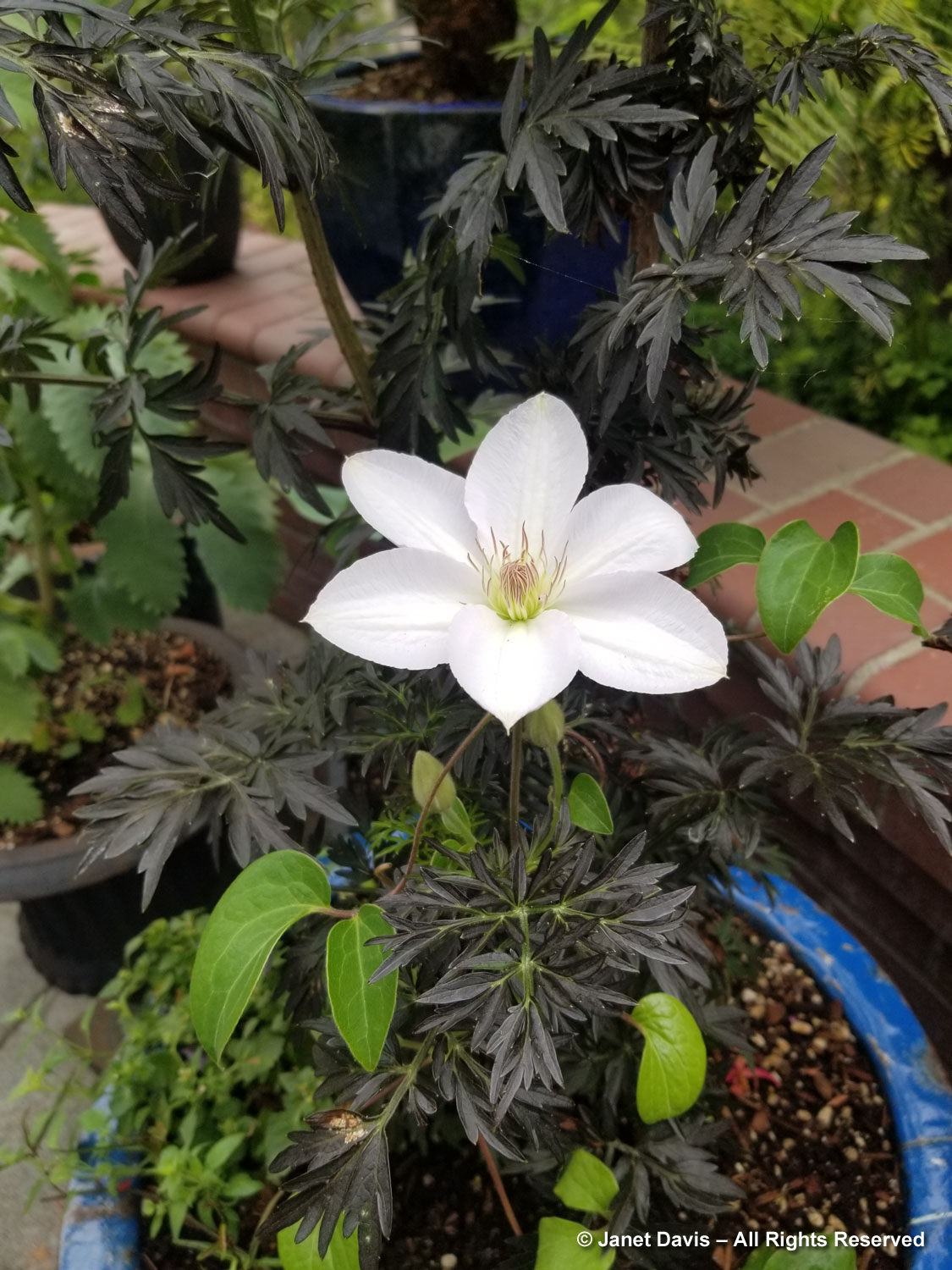
The path beneath the house’s front terrace is edged by a rich diversity of shade-loving foliage plants.
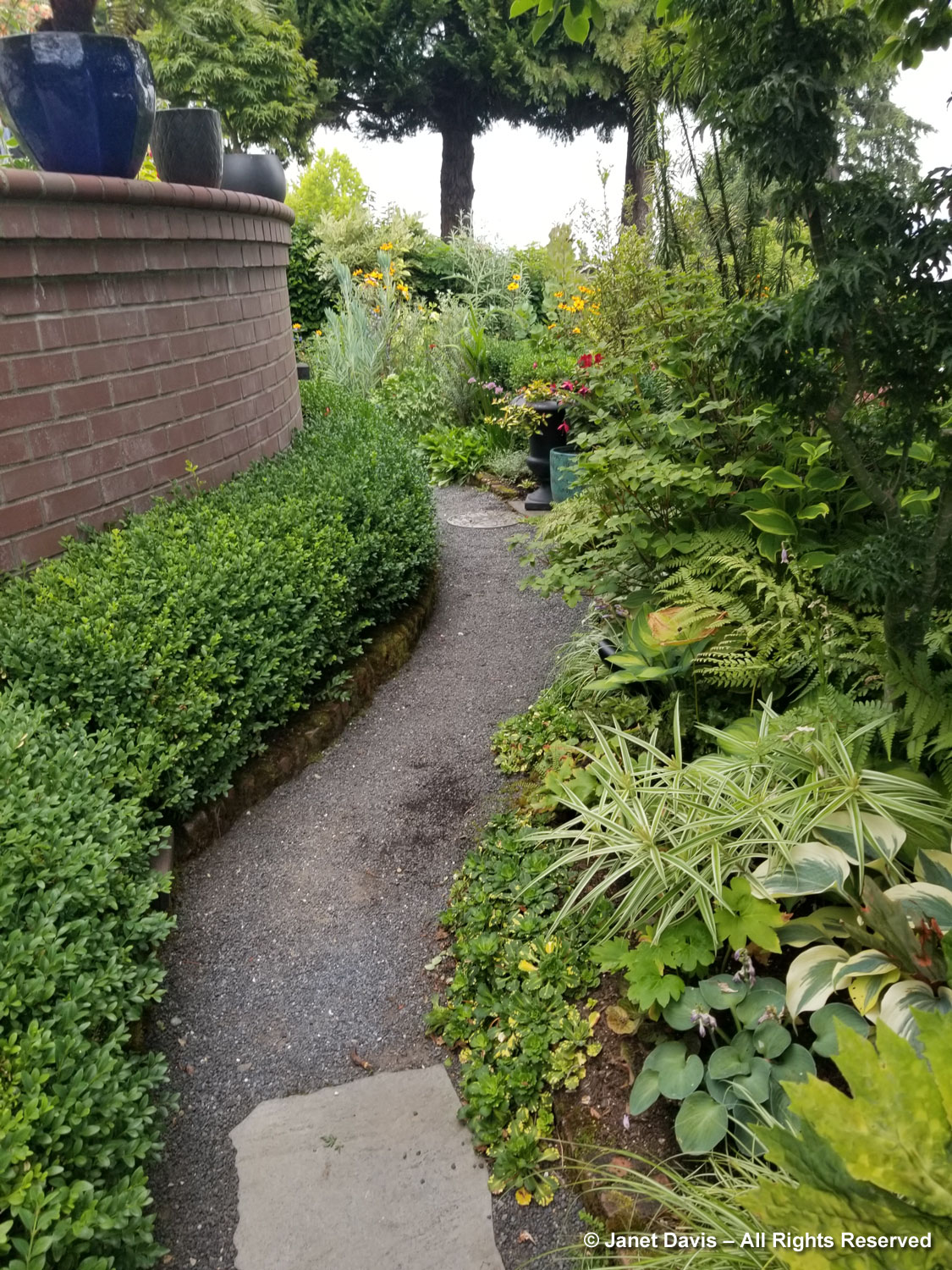
In a sunnier spot, the silvery-blue stems of skyscraper senecio (Curio ficoides ‘Mount Everest’) illustrate the plant collector’s passion.
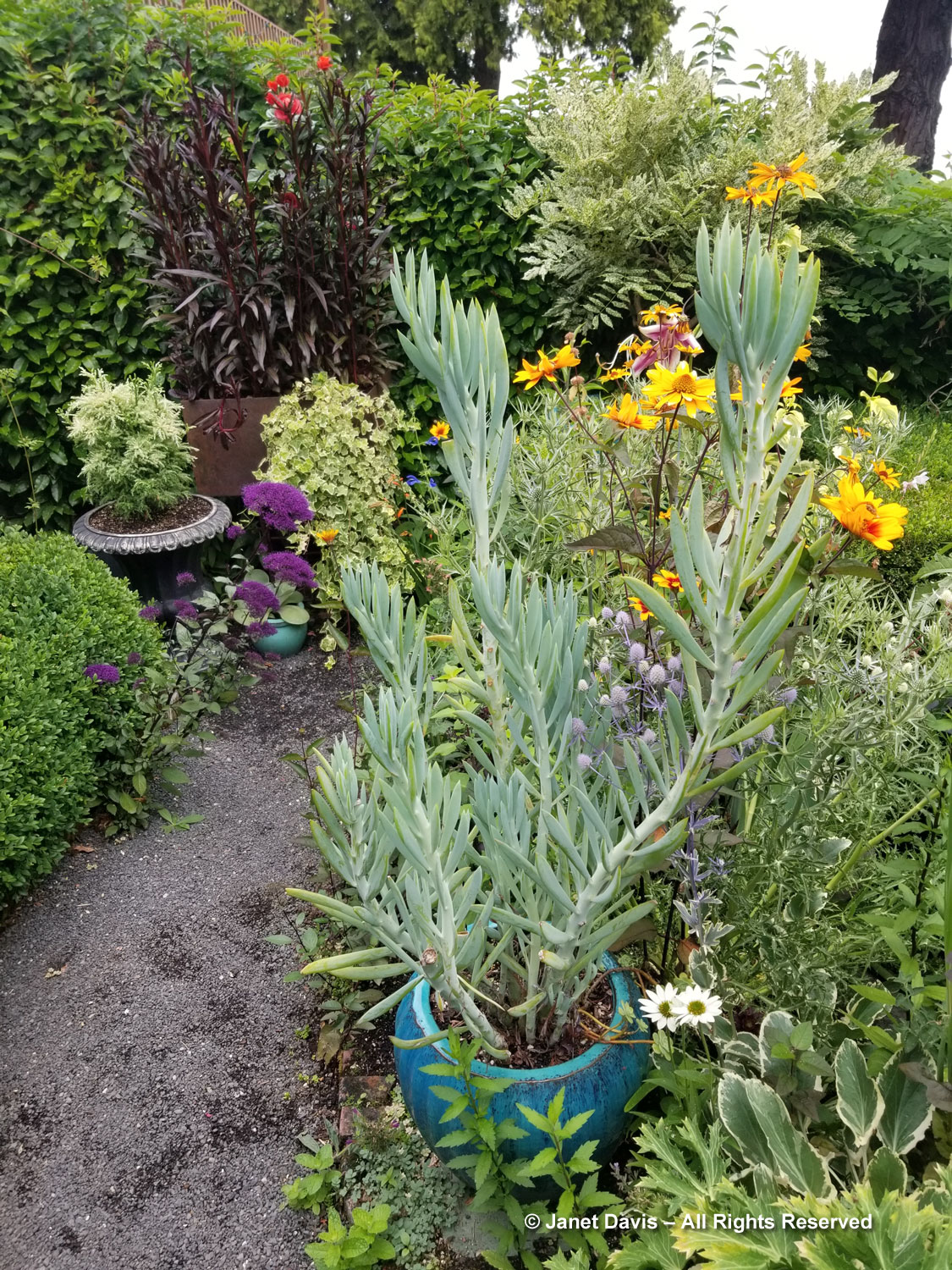
Native to Japan and Korea, the shredded umbrella plant (Syneilesis aconitifolia) bore a solitary flower stem, its attractive foliage more chartreuse in this garden than I’d seen before.
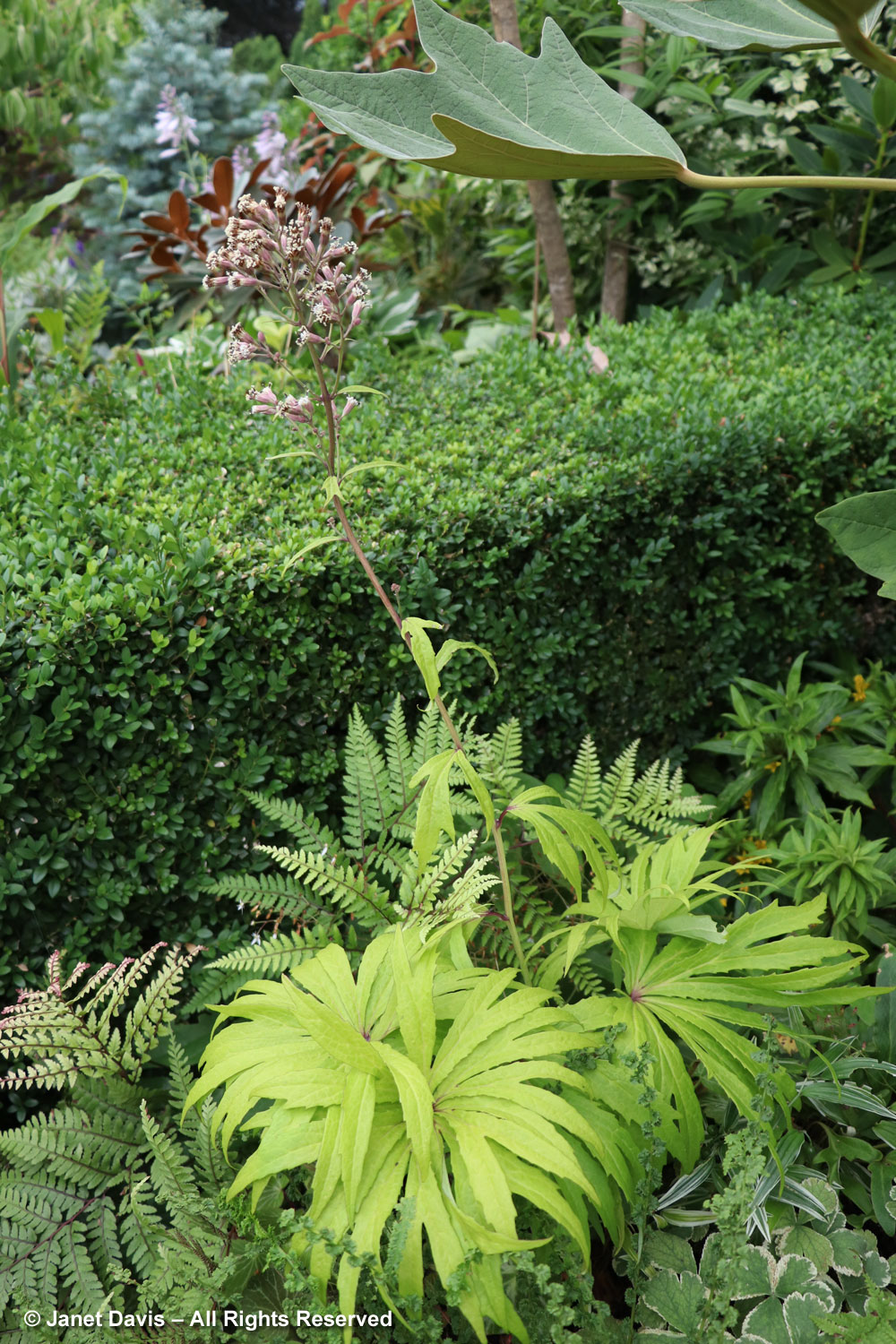
As it was time to leave this jewelbox Seattle garden, I spotted a plant I had heard about but never seen, Paris polyphylla, a trillium cousin native to China. And I thought how appropriate, in this garden of rareties, to be treated to yet another. If only I’d had another four or five hours to spend here! Thank you, Bonnie Berk.
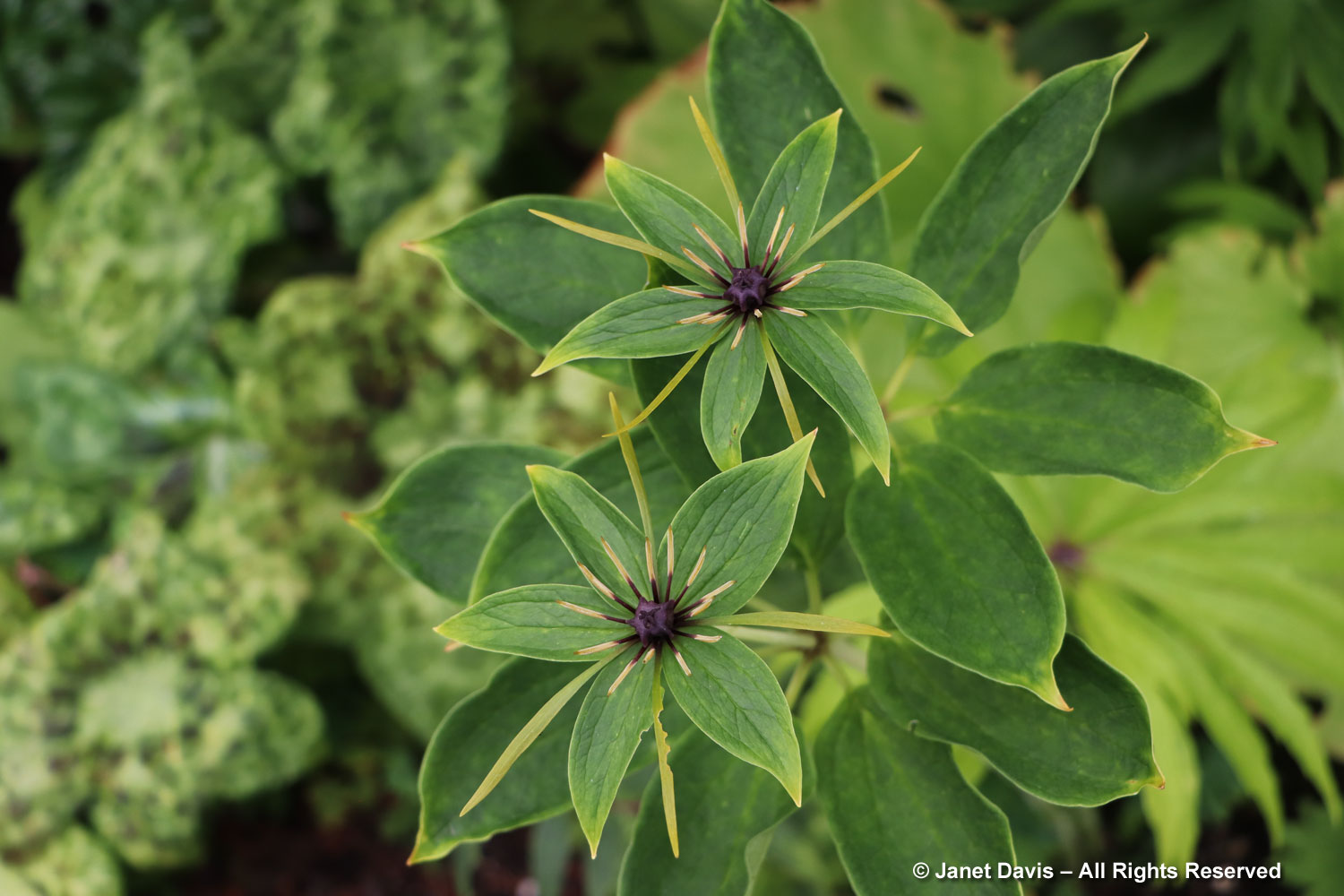
********
Read more of my recent blogs on beautiful summer gardens of the Puget Sound:

This was another one of my favorites. A lot of texture and color jam-packed into the space. That giant green hedge along the one side of the garden was perfection!
Thanks, Jerry. I have a photo of you kneeling in front of Bonnie’s long border.